
Original Link: https://www.anandtech.com/show/1499
Buyer's Guide - Entry Level, October 2004
by Jarred Walton on October 6, 2004 12:05 AM EST- Posted in
- Guides
Introduction
When it comes to Entry Level systems, there are two types of customer. One is the person who's looking for a computer strictly for business -- office work, taxes, email, Web browsing, etc. The second is the customer who's looking for a system that fills all those needs while also serving as a quality gaming machine. While a budget gaming PC can handle all of the typical office and Internet tasks, the reverse isn't necessarily true. As in the past, this month's Entry Level Guide will give a several option for each component. However, rather than simply listing recommended components and alternatives, we will be focusing on suggestions for home office and gaming configurations.Only you can decide what your actual wants and needs are. If you have no interest in playing games on your computer, our Office recommendations should provide more than enough power. On the other hand, if you are building a PC for the whole family and would like something that can be used by mom and dad as well as the kids, take a look at the Gaming configuration. PC Gaming is not an inexpensive hobby, however, so expect to spend a little more money if you want to add gaming capabilities.
Our end goal is to put together a budget Office PC for around $500 and a budget Gaming PC for under $1000. That might seem like a large margin, but it is very difficult to build a reasonable gaming computer for anything less than $750, and we have included upgrades that we feel will enhance the overall experience as well as the life cycle of the resulting machine. This is an Entry Level Gaming PC that should manage to run most of the cutting-edge games for the next year or more at reasonable rates, provided that you are willing to turn down the graphical complexity a bit.
CPU and Motherboard: Budget Office
For many years, if you wanted to keep up with computing trends you had to be willing to upgrade. This could range from replacing a few parts to purchasing an entirely new system. While that might not be a problem for some, for others it was a difficult proposition. Back in the 80s and 90s, buying a new computer every year or two could cost as much as a used automobile (although reliability might be a concern). Thankfully - depending on whom you ask - things have started to slow down. Many businesses continue to run two or three year old PCs with no real need to upgrade. Any processor running 1 GHz or faster is more than sufficient for surfing the net, writing email, and doing miscellaneous office work. It may not set any speed records, but other than an initial delay while starting up, most office applications spend most of their time waiting on the user.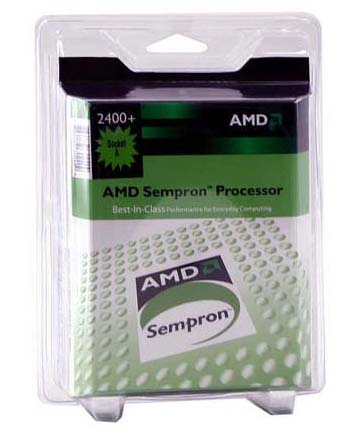
Office CPU: AMD Sempron 2400+ 256K 1.67 GHz 333 MHz bus
Price: $65 shipped (Retail)
Our recommendation for this month's budget CPU goes to the AMD Sempron 2400+. The Sempron is basically a tweaked version of the venerable Athlon XP Thoroughbred core. Do not let the names confuse you; the Sempron family is meant to compete with the Intel Celeron line of processors and it actually runs at the same speed as the Athlon XP 2000+. However, the Sempron does use a faster 333 MHz bus, which can improve performance slightly, and since the two chips are basically the same price, there is little reason not to opt for the faster bus.
Should you wish to spend a little more on a faster processor, the Athlon XP 2500+ is still a reasonable purchase at roughly $25 more than the Sempron 2400+. It increases clock speed and doubles the amount of cache. However, AMD has recently started to phase out the Athlon XP processors and shift production to the Sempron and Athlon 64 lines, so Athlon XP prices are starting to rise. If you really want to pick up a Barton core Athlon XP, we recommend that you act sooner rather than later - the 2500+ has gone from a low of $75 a few months back to $90.
The Celeron D processor from Intel is also available at relatively low prices, but the price/performance ratio is usually lower than Athlon XP/Sempron. For those who simply have to run an Intel CPU, they are a reasonable alternative. Intel motherboards also tend to cost a little more, so the net result is that $20 will buy a Celeron D 320 and i865PE motherboard which may be slightly faster than the Sempron 2400+. The same $20 would also buy an Athlon XP 2500+, which would be another bump up in speed from the Celeron D 320. We recommend that you stay away from the older Celeron processors, however, as they use a slower bus and have 128K of L2 cache, which really hurts their performance.
Choosing a motherboard in this price segment is extremely difficult. Socket A has been around for over four years now and there have been dozens of chipsets both with and without integrated graphics. If saving money is your top priority, you might want to find an Nforce2 IGP motherboard, as it remains to this day to be one of the best integrated graphics solutions. Prices for these motherboards tend to be around $70 to $80. You will also find numerous refurbished motherboards available at a discount, but we prefer to stick with new models with their longer warranties.
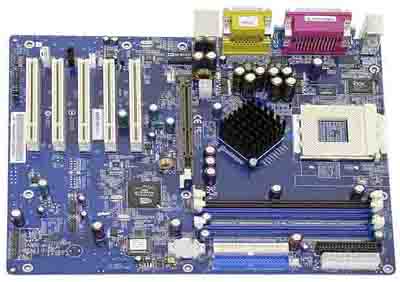
Office Motherboard:Shuttle AN35N-Ultra
Price: $58 shipped
Shuttle gets the nod for our budget motherboard this time, as it includes more high-end features while still providing good reliability and performance. There may be other motherboards that are 1 or 2% faster, but they tend to cost more. The Shuttle features the more advanced Nforce2 Ultra chipset, which provides support for dual-channel memory. Should you be willing to spend a little more money, there are dozens of other motherboards that will work equally well and include additional features like SATA, IEE1394 (Firewire), RAID, and higher quality audio. However, none of those features are necessary and they increase the price slightly.
Update: If you read this guide earlier, you may have seen the Asus A7N8X-X recommended. Some of our readers were good enough to remind us that this board does not support dual-channel RAM. While it might only make a 3 to 5% difference in performance, the Shuttle supports this feature and costs less, and we have no problem wiht recommending it as in place of the ASUS. Abit, Albatron, ASRock, Chaintech, MSI, and quite a few other companies provide good motherboards at very low prices. The only feature that we still insist on for any socket A motherboard is that it use an Nforce2 chipset. Not even the new KT880 is able to fully match the performance of the Nforce2, and since they remain roughly the same price, why settle?
CPU and Motherboard: Budget Gaming
Very few applications can stress a processor as much as a game, so we recommend that anyone with an interest in the hobby plan to spend more money. Some might even go so far as to say that the words "budget" and "gaming" do not belong in the same sentence, but we feel that budget gaming is possible - you just have to increase funding by a little. If you can cut down on those fast food trips and eat ramen noodles for a month, you should be able to afford a decent gaming system.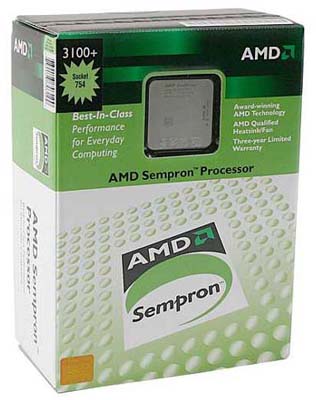
Gaming CPU: AMD Sempron 3100+ 256K 1.8 GHz 400 MHz bus
Price: $120 shipped (Retail)
In order to help you get your gaming fix, we have moved from socket A to socket 754 for our CPU and motherboard recommendation, and the Athlon XP has finally been replaced by the Sempron 3100+. For a price increase of roughly 25% over the Athlon XP 2500+, performance is increased by a similar amount. In addition to the increased performance, the newer socket 754 platform should allow for more upgrades in the future as they become necessary.
Socket 754 was previously the domain of the 64-bit Athlon 64. However, in order to cut costs and avoid cannibalizing sales of their premium processors, AMD has reduced the amount of cache to 256K and disabled the 64-bit extensions. These omissions do not affect performance as much as they might on another platform, though, since the integrated memory controller remains and 64-bit application and operating system support continues to be delayed. Right now, it is difficult to find a gaming processor that can match the price of the Sempron 3100+ while still providing sufficient horsepower to run current and upcoming games well.
Should you wish to gain even more CPU performance, you could always opt for an Athlon 64 2800+ or 3000+. Again, the naming conventions may cause some confusion, but remember that the Sempron competes against the Celeron line of Intel and not the Pentium 4. The 3100+ is equivalent in speed to the Athlon 64 2800+ (1.8 GHz) only without the additional cache and without 64-bit support. Our benchmarks of the processor show that, on average, the 2800+ is about 5% to 10% faster, making the additional 20% increase in price a losing proposition for the budget gamer.
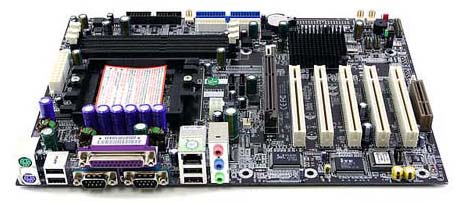
Gaming Motherboard: Chaintech VNF-250
Price: $77 shipped
By moving to socket 754, we increase the price of the motherboard slightly as well, but the feature list is also improved. In addition to sound and network, two SATA connections with RAID 0/1 support are included. Those may not be important features for anyone on a tight budget, but it is difficult to complain about their inclusion when the price and performance are so good. The Chaintech VNF-250 also uses the latest NVIDIA Nforce3-250 chipset, which is currently the top choice for socket 754 and 939 motherboards.
You might notice that the same CPU and motherboard recommended here matches our value overclocking configuration. This is simply one more perk that comes along with the package. We will defer to the Overclocking Guide for those seeking more detail on this subject. Even without overclocking, the performance of the Sempron 3100+ and Chaintech VNF-250 remains very good.
Memory
Choosing an ideal configuration for RAM in a budget computer can be a frustrating task. The fact of the matter is that 256 MB DIMMs are on their way out, and with XP SP2 now enabling additional features that use up more of your RAM, a system with only 256 MB of RAM is really meeting the bare minimum requirement.Choosing RAM is further complicated by the sheer variety of offerings in any one category. In an ideal world, all memory rated at the same speed and timings would perform equally well, but reliability can become a concern with some of the generic brands. We would prefer to spend a few extra dollars to get RAM from a well known company.
When building a budget system, it does not make sense to purchase more expensive RAM with better memory timings at the cost of RAM capacity. The typical increase when going from the "worst" 3-4-4 timings to the "best" 2-2-2 timings will be less than 10% (and often, less than 5%), and adding more RAM will often have further impact up to 512 MB. This is especially true for gaming.
In the end, we felt that it was best to give four suggestions in the RAM department, with a brief explanation of the pros and cons of each option. We have chosen Corsair RAM for all options, based on their reliability, price and performance. Mushkin, OCZ, Crucial, Kingston, GEIL and several others offer similar reliability and performance, so if you can find those for less money where you live, they are also acceptable.

RAM Office Recommendation: 1x256 MB Corsair Value Select CL2.5
Price: $43 shipped
At the lowest end of the spectrum, if your computing demands are very light, you can simply get one 256 MB DIMM. This will be enough for running typical office applications and web surfing, and it comes with the lowest price. Having multiple applications open at the same time may be somewhat sluggish, but that will largely depend on how you use the system. You can always add a second 256 MB DIMM after building the system, if should you find performance to be insufficient. Finally, if you look around, you can often find sales on 256 MB DIMMs that end up costing little to nothing after the Mail-In Rebate.
RAM Office Alternative 1: 2x256 MB Corsair Value Select CL2.5
Price: $86 shipped
For the socket A system, memory can be run in dual-channel mode, which can improve performance slightly. The drawback is that you have now used up two of your DIMM sockets, which limits your options for future RAM upgrades. Buying two 256 MB DIMMs is also more expensive than buying a single larger 512 MB DIMM, but if you do not plan on upgrading your system and are willing to spend the extra $10, it might be worthwhile.

RAM Gaming Recommendation/Alternative Office 2: 1x512 MB Corsair Value Select CL2.5
Price: $70 shipped
For the socket 754 system, there is no performance benefit from having more than one DIMM, so there is no reason not to buy a single 512 MB DIMM. If you are looking to save on costs, but want a full 512 MB of RAM, it can also be used with the socket A system. If you are planning on doing much photo or video editing, starting with 512 MB with the intent to upgrade also makes sense.
RAM Gaming Alternative: 2x512 MB Corsair Value Select CL2.5
Price: $140 shipped
Finally, if gaming is a real concern, upgrading to a full gigabyte of RAM can be beneficial. It is not required (yet), and it might be wise simply to try out your system with 512 MB of RAM and only upgrade if you are unsatisfied. Still, several recent games feel smoother with 1 GB of RAM compared to 512 MB, since adding RAM can help avoid swapping data to your hard drive. If the games that you play are constantly stuttering and you see your hard drive activity light flickering, adding more RAM should help out.
Video Cards
We mentioned earlier on the motherboard selection that you might look for a solution with integrated graphics. We do not recommend it, but you can save about $20 should you choose to go that route. We prefer to go with an add-in graphics card and avoid integrated solutions. Part of the reason for this is drivers, since getting up-to-date drivers for integrated graphics solutions can often be difficult. It is easier to find drivers for Intel, NVIDIA, and ATI solutions, but the ATI and Intel options are currently only available for Pentium 4/Celeron platforms. However, we still prefer the quality and reliability of the discreet graphics cards manufactured by ATI and NVIDIA.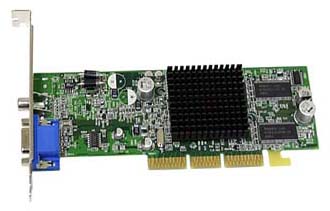
Office Graphics Recommendation: Celestica Radeon 9200SE 64MB DDR
Price: $35 shipped
The Radeon 9200SE continues to provide the best price for anyone looking for a cheap, but reliable, graphics card. Nearly all of the Radeon and GeForce graphics cards use the reference design, so quality and stability are very good. For non-gaming use, it really does not matter too much what type of graphics card you use. So, those who prefer something other than an ATI card might look to the GeForce 4MX cards or even FX5200 - although the latter costs a little more. Reliability of any of these cards is very good, as is the driver support. Just do not expect much in the way of performance should you try to fire up a 3D application.
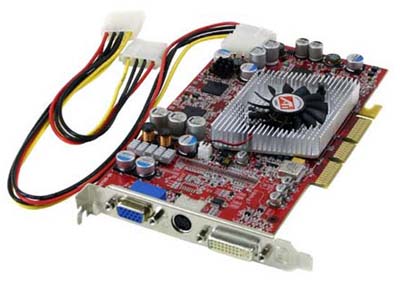
Gaming Graphics Recommendation: Connect3D ATI Radeon 9800 Pro 128MB DDR, 256-bit
Price: $195 shipped
The price of our suggested "Budget Gamer" graphics card may seem somewhat out of line with the rest of the choices, but you really have to look at the bigger picture. With pretty much any moderate CPU, the bottleneck in games is going to be your graphics card. Personally, we would recommend that you save a bit of money on the CPU in order to upgrade your graphics card rather than the other way around. A P4 560 (3.6 GHz)/3500+ A64 processor will still struggle to run games when paired with a low-end graphics card, while a moderate 2.4 GHz Celeron D/2400+ Sempron will be sufficient for almost any game when paired with a mid-range graphics card. If you cannot afford $200 for a graphics card and you want to be able to play games for at least another year on your PC, you are better off saving up money for a few more months rather than settling for a cheaper alternative.
Within that $200 price range, there are many options for the budget gamer, and several new cards should be available within the next month that are worth waiting for. We are talking about the NVIDIA 6600GT and the ATI X700XT, which we have recently previewed. Unfortunately, you will need to wait for AGP versions if you want to stay with the rest of our budget configuration, which means that it might be two months or more before they are available. Of course, there is always something better coming out in the next few months - by the time the 6600 and X700 arrive, the latest buzz will be about the soon-to-be-released Spring graphics chips.
If you cannot wait that long and you still want a good gaming graphics card, the Radeon 9800 Pro continues to provide great performance for the price. Our initial previews of the 6600GT and X700XT show that while they will be generally faster than the 9800 Pro, the margin is not that great. This is not too surprising, considering that they all have eight pixel rendering pipelines. The 9800 Pro falls behind in core clock speed, but it makes up for it in memory bandwidth, resulting in relative performance that can fluctuate by up to 20% in either direction. Overall, the price is about the same on all the cards, but you can go out and purchase the Radeon 9800 Pro today.
Other options for the budget gamer include the 9600 Pro and 9600 XT, along with the FX5900 XT. Longevity is a pretty major concern with all of those, but they should suffice if you are not too demanding. If you are a more serious gamer and can actually spend the money, there are much faster cards available, which can improve performance further, but their prices do not fit the budget category. We recommend that you take a look at our other Buyer's Guides for further input.
Hard Drives
As with most of the other options, there are tons of potentially good hard drive choices. The three main factors that influence hard drive performance are the RPM, the amount of cache, and the capacity. While many might insist on a drive with 8 MB of cache, it is not strictly required for the budget segment, and getting a 2 MB cache drive can save you about $10. Getting a 5400 RPM drive instead of a 7200 RPM drive, on the other hand, is not recommended.The question of how much capacity you need is really up to the individual. Some people would never even manage to fill a 20 or 30 GB drive, while for others, even 200 GB may not be enough. These days, the cheapest hard drives still tend to cost about $50, and anything smaller than 40 GB will not be any cheaper. In fact, 80 GB drives are only slightly more expensive than 40 GB drives, and we feel that the extra $10 is worth it to double your capacity.
With most hard drives now spinning at 7200 RPM or faster, noise has become more of a concern. Particularly with an office computer, many people will find high noise levels to be distracting. Earlier 7200 RPM drives have been known to have a high pitch whine. Most companies have now upgraded to the latest spindle technology known as fluid dynamic ball bearings, which help to all but eliminate the noise of the hard drive. Many Western Digital Caviar and Maxtor drives use the older bearings and so, unless noise does not bother you, we recommend that you search out a drive that uses the fluid dynamic bearings. This is available on Hitachi, Maxtor, Samsung, Seagate, and Western Digital drives now, but take some time to make certain that it is on the model that you are purchasing.
One trend that we are happy to see is the return of longer warranties. For a while, many companies were shifting to 1-year warranties. Now, most of them have returned to 3- or even 5-year warranties on their drives. Seagate has led the way with a standard 5-year warranty on all of their models, including previously purchased drives! Others have only increased their warranty on current models. Just remember that the warranty only covers the physical hard drive, so you still need to make backups of your important files.
The final topic relating to hard drive choice is the interface. Parallel ATA - also called IDE or EIDE - has been around for a long time, so it tends to be slightly cheaper. The budget office motherboard that we recommended does not support anything else, but the gaming motherboard offers support for up to two Serial ATA connections. There is little to no difference in real world performance between the interfaces, at least in the budget segment, but SATA does use a thinner cable that is easier to work with. All things being equal, we would prefer a SATA drive over a PATA drive, and we would even be willing to pay a little more for it if necessary.
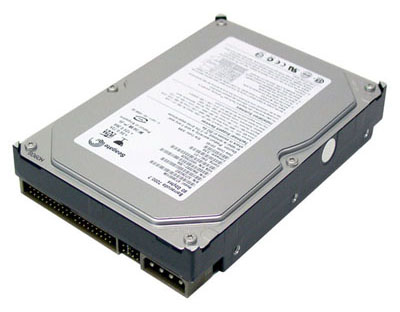
Office Hard Drive Recommendation: Seagate 80 GB 7200 RPM 8MB PATA
Price: $67 shipped
With all the considerations listed above, it is difficult to argue with the choice of a Seagate hard drive. You get the full five-year warranty (two years more than most of the competition), quiet operation, good performance, and plenty of storage. You could save a few dollars by choosing some alternative, but it just does not make a lot of sense. Should you need more storage space, models with 120 GB and 160 GB are available and have a lower cost per GB, but 80 GB should be plenty for even the most demanding office work.
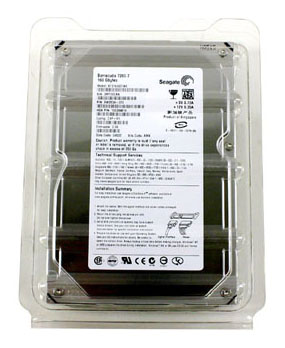
Gaming Hard Drive Recommendation: Seagate 160 GB 7200 RPM 8MB SATA
Price: $107 shipped
Our recommendation for budget gamers remains with Seagate, due to their impressive set of features and reliability. The difference is that we have chosen to go with a SATA drive instead of PATA, and we have increased the recommended capacity to 160 GB. That may seem like overkill, but when you consider that Far Cry, Unreal Tournament 2004, and Doom 3 all require about 4 GB of hard drive space - and that's without any of the extra content that you can find online - it is very easy to run out of storage for your games. If you uninstall games that you are not currently playing, you can get around this potential difficulty, but that is not the most convenient of solutions. You can always downgrade to a 120 GB or 80 GB drive if you disagree. The cost per GB of an 80 GB SATA drive is 89 cents, while the cost per GB of the 160 GB drive is 71 cents. If you can afford it, you get double your storage space for about a 50% price increase.
Optical Drives
Prices on optical drives have really bottomed out, and it is now possible to pick up a DVD burner with dual layer support for under $70. We do not feel that a budget system actually needs a DVD recorder, but the option is there should that sort of thing interest you. The only other thing worth mentioning is that you should make sure to get an optical drive that matches the front of your case. Since the two cases that we have selected are black (as you will see later in the guide), we went with black optical drives. Beige models of the same drives are also available.While you might be able to find a CD-ROM drive for less than half the cost of a CD-RW, we recommend that you "splurge" on the CD-RW for a couple reasons. First is that you never know when you might decide to start creating your own CDs, be they music, photo, or other content. Second, CD-R discs are extremely cheap and relatively fast, and they are far more reliable than floppy disks for storing data. Making periodic backups to a CD-R is relatively simply and painless, and each disc can hold a lot of data. There really is no reason not to get one.
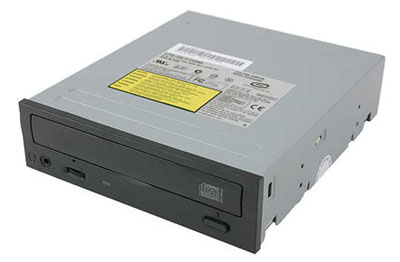
Office CD-RW Recommendation: Lite-On SOHR-5238S 52x32x52x CD-RW
Price: $28 shipped
We have chosen to recommend a Lite-On CD-RW drive for this month's budget system. This change is not so much due to an inherent superiority of the Lite-On drive, but instead, it is meant as an alternative to previous recommendations. Nearly all current 52X CD-RW drives are within a few dollars of each other in price, and performance and reliability are all very close together as well. Aopen, ASUS, Sony, Samsung, Pioneer, Plextor, NuTech... for CD-RW drives, we have not seen any major issues that would cause us to seriously recommend one drive over another. Some users also report getting better burn rates and quality by using unofficial BIOS updates - proceed at your own risk if you decide to try out any of these mods.
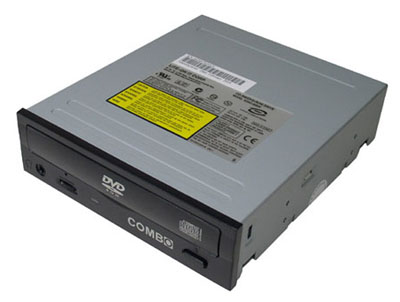
Gaming CD/DVD Alternative: Lite-On SOHC-5232K CD-RW/DVD Combo
Price: $45 shipped
For gamers, we highly recommend getting a DVD/CD-RW or even a DVD+/-RW drive. There have been a few games recently that have appeared with special DVD-ROM versions, and even though the content is the same, worrying about only one DVD is more preferable to shuffling through four or five CDs, while you try to figure out which is the one that you need to have in the drive to be able to play your game. We can only hope that more future titles will begin to ship on a single DVD instead of multiple CDs, and to facilitate that, we suggest that all gamers have a system that can at least read DVDs. You also get the added benefit of being able to watch movies on your computer, of course. 8X DVD+R drives start at about $10 more, but as we mentioned earlier, we do not really feel that they are necessary, so we are cutting our costs a bit for now.
Case and Power Supply
Tastes in case design are very personal. Some do not mind a "boring" beige case, while others have to have lights and windows and all sorts of other extras. Since this is a Budget Guide, truly exotic designs are not really possible, but that does not mean that we have to settle for ugly or boring. The choice of case is one area where there is not as much difference between the office and gaming recommendations. However, heat is more of a concern in a gaming system, so we recommend that whichever case you select, you should add in an extra case fan or even two, just to be safe.We like cases that are easy to work with, and the more frequently that you upgrade components, the more important such concerns become. If you typically build your system and then rarely open it other than to blow the dust out every three to six months - something that we highly recommend all computer owners do, as dust can literally kill your computer parts - ease of use might take a back seat to outward appearance. Most budget cases are going to be made out of steel and plastic, although you might find some less expensive aluminum cases if you look around. Steel cases are usually more durable, but they also weigh more and some may feel that they are less visually appealing. Then again, you can always change the look of any case by modding it.
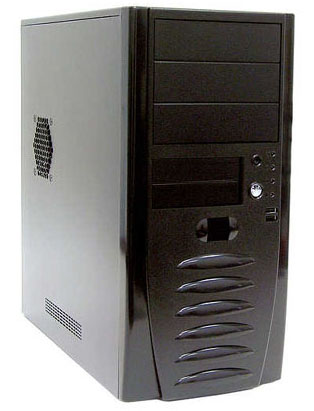
Budget Case Recommendation: Antec SLK1650B with 350W PSU
Price: $73 shipped
Antec is well known for their power supplies and cases. While they may not be the cheapest case around, their quality is beyond reproach. There are currently several variants of the SLK series from Antec, with this being the cheapest model. It lacks the door of the 2600-BQE, which many people actually prefer. The case includes a whisper-quiet 120 mm temperature sensitive fan for the rear, and there is room to add an 80 mm fan at the front of the case for improved cooling. Also included is a plastic duct on the side panel, which will help your CPU to draw in cool air. The 350W PSU that comes with this case retails separately for over $40, so when you consider that, the Antec case becomes even more attractive. Although they may not be the flashiest cases on the planet, Antec sells cases that are easy to work with, quiet in operation, and simple, yet elegant. It is hard to match their price without sacrificing reliability and features.
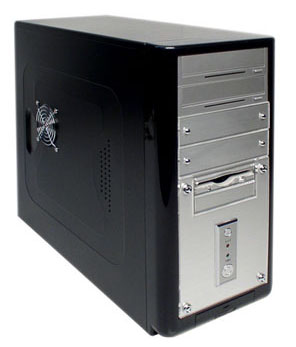
Budget Case Alternative: Aspire Black Turbo Case ATXB2KL with 350W PSU
Price: $52 shipped
Our alternative case comes from Aspire, and we include it more as an example of the other options that exist as opposed to a real recommendation. You can also look at our past Guides for some other options. Aspire makes a variety of cases in terms of both styling and color. We have chosen the base model, but you could also choose a model with a window on the side, with or without lights, in blue, red, green, yellow, etc. The quality of Aspire cases is merely okay, which fits with our budget motif. They will not win awards for being the best cases available in the market, but it is difficult to argue with the price. If you are looking for other options, RAIDMAX is another company that offers similar quality and at similar costs.
The front of the case is silver with doors that flip down to allow access to the CD/DVD drives. This looks nice, but the covers can be somewhat difficult to get lined up properly with some optical drives. You can always remove the covers, but then the overall look of your system will be marred. Installing your components into this case may also take a little more time and effort, and the durability of the case is not very good. However, if you do not move your case around much and you (or your children) do not use it as a stool, it should be fine. The case comes with a 350W power supply (PSU), but it is basically a generic PSU and the usual disclaimers about getting what you pay for apply. Overall, we feel this is an attractive case with some problems, but it is offered at a very low price.
Power Supplies
While both cases include 350W power supplies, they are not necessarily equal. In the past, it may not have mattered what sort of PSU you used, but modern computers require more of their power supplies. Inconsistent power can cause system instabilities that are very hard to track down. Many computer enthusiasts will have a spare PSU available just to be safe. It is important to state that the advertised wattage for a power supply can be influenced by a number of factors, temperature being the greatest. Some units might list a 350W operating capacity that can only be achieved reliably if the temperature is 70 F or lower - this is not a common occurrence for the inside of a computer case.You also have to look at how the power is distributed. The CPU, RAM and motherboard components will stress the 3.3V, 5V and 12V output. Hard drives, optical drives and fans only stress the 12V lines. Graphics cards that require an additional power connection will also stress the 12V lines. The amperage that is available for each is actually more important than the wattage. In the end, what you see on the sticker attached to a power supply may or may not be realistic. If you can actually compare various power supplies, we recommend giving each the extremely scientific heft test: pick up the power supply, and compare their weights. Heavier units usually have higher quality components and are, thus, more reliable.
This brings us to a point that many people fail to consider: once you add in the shipping costs for ordering a case and power supply from an online reseller, you may have been better off buying from a local shop. In the latter scenario, you can actually physically handle any case that you might be interested in purchasing, along with the power supply. It may still be slightly cheaper online, but should your PSU fail for whatever reason, a quick trip to a local store is a lot nicer than going through a two-week (or more) RMA process through the mail.
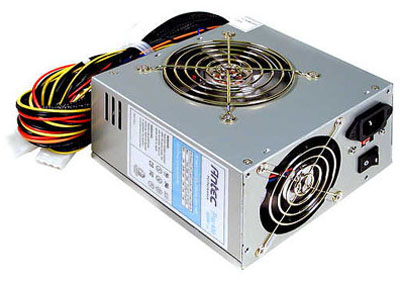
PSU Alternative: Antec True430 430W PSU
Price: $70 shipped
For the budget office system, the PSU that comes with either of the above cases should be sufficient. The gaming system really needs a decent power supply to be safe, and we feel that the Antec case and its accompanying PSU win in this respect. Should you prefer a different case or you simply want a quality PSU, Antec, Enermax, and Thermaltake are regarded as being some of the best PSU manufacturers. Power requirements are only going to increase with time, so if you want to upgrade your budget computer with higher performing parts over time, a 400W or higher PSU would be worth the investment. For this reason, we recommend that users who are interested in a higher quality power supply should save up the money to actually get a really high quality part. The Antec True430 is, simply put, one of the best power supplies on the market.
The old adage of "you get what you pay for" certainly applies, but for some, the outward appearance of a case will be more important than the construction - after all, you only need to build a PC once if you do not upgrade parts, but you have to look at the outside of the system every day. So, if you do not like either of the cases that we have shown here, do not feel bad about purchasing a different case. You may need to purchase an additional power supply, and the interior may not be as friendly - many cheap cases come with sharp edges that can easily cut you if you are not careful - but once the system is assembled, it usually does not matter.
Displays
Choosing a display is a lot like choosing a case: what one person likes may not appeal to another. Some people love flat panel LCDs, while others prefer the flexibility and size of a typical CRT. Since this is the Budget Guide, LCDs really are not an option - a good quality LCD can cost as much as the rest of our budget computer! Still, the one piece of your computer that you will spend more time looking at than anything else is the display - unless you have to stare at your keyboard while you type. We are inclined to say that you should do your best to avoid purchasing a "budget" monitor, as a high quality monitor can easily last you through three or four computer upgrades and it can also be easier on your eyes.If you already have a monitor that is sufficient for your current needs, we strongly encourage that you to save up some additional money until you can purchase a higher quality display. Whether that is a 19" or 21" CRT or a 17" or 19" LCD, it is up to you to decide, but if possible, we would encourage spending $250 or more on the display. You might also try to find a cheap, used monitor that can last until you can purchase something better, or you could look into getting a decent refurbished display. Consumer electronics stores usually carry a variety of displays as well, often times at discounted prices, and you get the option to try before you buy. Still, there are some good 17" displays that fit the budget topic and are worth buying.
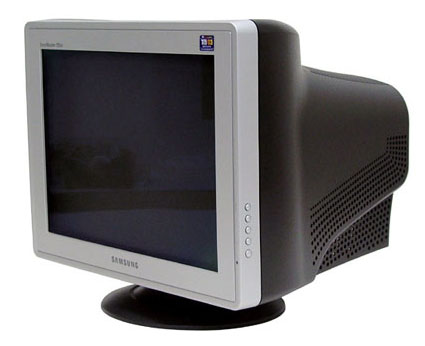
Budget Display Recommendation: Samsung 793DF-T/T 17"
Price: $139 shipped
Samsung makes some very good displays, in both the CRT and LCD segments. The controls are straight forward and offer all the common adjustments, and the image is very clear. It may take a little time to get the image calibrated properly, but the same can be said of practically all CRTs. The two-tone color effect is one that you will probably either love or hate; personally, we think it looks pretty good and matches up with black or beige cases relatively well. The one feature that we miss is the lack of a 75 Hz or higher refresh rate at the maximum 1280x1024 resolution. Unfortunately, this appears to be the case with all 17" CRTs.
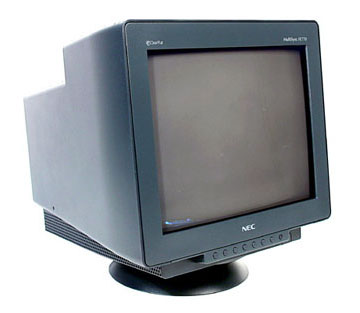
Budget Display Alternative: NEC FE770 17"
Price: $149 shipped
Our alternative monitor selection does not differ greatly from the recommended monitor. Both feature the same screen size, maximum resolution, and refresh rate. Only the controls and the casing are really different, with the NEC coming in solid black. Should you want a different look, the NEC FE771 is the same display only with a beige enclosure. The monitor produces sharp images, and there is even a "Super Bright" function that can be useful in dark games (Doom 3) and movies. For normal use, we find that the Super Bright function can be somewhat painful to look at for long periods of time, but it is easy enough to turn off. Once again, the refresh rate at 1280x1024 is only 60 Hz - officially, it is 66 Hz, but few (if any) graphics cards support that refresh rate - but it manages a more useful 75 Hz at 1152x864.
There really is not much to separate the NEC from the Samsung monitor, so we suggest you go with whatever color scheme you prefer or whichever one has the better price. It is worth noting that both displays use aperture grilles (as opposed to invar shadow masks). Some people find the two faint horizontal lines to be annoying, but they really only show up against a white background and even then, we do not find them to be very visible. If you look for them, you can find them, but it is not something that we tend to notice. If they bother you, then you will want to go with an invar shadow mask tube; or else, scrape together the funds to get an LCD.
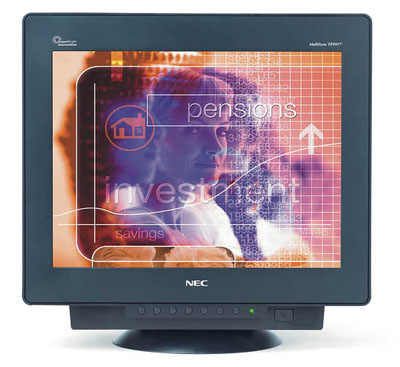
Gaming Display Alternative: NEC FE991 19"
Price: $264 shipped
While this may not be much of a "budget" part, it is worth suggesting as an alternative that will put us slightly over the $1000 price limit for a budget gaming system. What the extra $100 or so will get you is a display that is 25% larger, which is always nice. More importantly, though, your maximum resolution is increased from 1280x1024 to 1600x1200 (technically 1792x1344, but games do not usually support that resolution), and at the same time your refresh rate at those resolutions goes from 60 Hz to 75 Hz. Many of us notice a distinct flicker when running at 60 Hz refresh rates, and some will even go so far as to say it causes headaches. As we said before, the display is one item that we strongly recommend that you spend some extra money on.
Speakers
Depending on what you want to do with your computer, there are a few different options in the sound department. We will leave it to you to decide which option fits your needs best.Office Recommendation: None/Headphones
Price: $0
If you are only interested in an office computer, you really have no need for actual speakers. Save your pennies for something that you will actually use, as the Windows beeps are not going to be missed. Besides, if you need sound at some point, you probably have a pair of headphones that you can plug into the computer. Should you change your mind, buying a set of speakers and hooking them up is about as easy an upgrade as you can find.
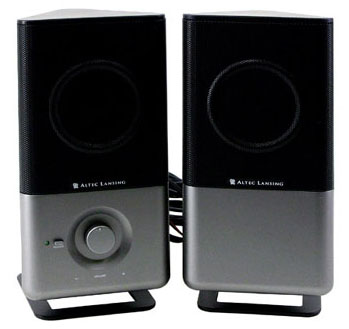
Office Recommendation 2: Altec Lansing 220 2.0 Speakers
Price: $16 shipped
If you want to listen to the occasional CD while you work on your taxes, or maybe play a few games now and then, these speakers will work well without costing a lot. They are pretty anemic when compared to something like a set of Klipsch ProMedia Ultra 5.1's, but at less than one twentieth the price, you cannot expect them to compete with Klipsch. You could also opt for a setup that includes a subwoofer, like the Creative SBS330 2.1, but then you are getting close to the cost of the last option with much lower quality.
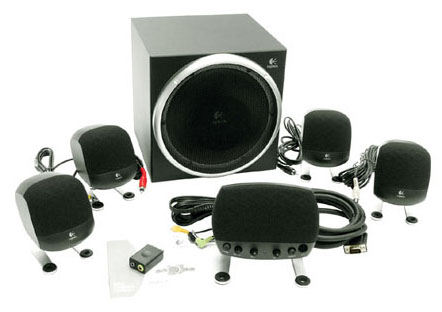
Gamer Recommendation: Logitech Z-640 5.1 Speakers
Price: $56 shipped
If it seems like almost every Guide that we have written lately includes these speakers as an option, just consider that a sign of their quality. There may be competing speaker setups from other companies, but we have yet to find one that can match the price and quality of the Z-640s. Even Logitech has come out with several new inexpensive 5.1 setups that cannot beat them. There are better sounding speakers out there, but they typically cost three times as much, if not more. These speakers can get plenty loud, and we can personally attest to the fact that they work well while playing games and watching movies. Some of us have even chosen to forgo expensive stereo components and just stick with these on our entertainment system. The only thing that they really lack is a remote control, but that's just us being greedy.
Miscellaneous Components
We have covered all of the parts necessary for building a computer with a few exceptions. Network and audio are provided by the motherboard, and there is no reason to purchase a separate card to handle those duties. A Sound Blaster Audigy 2 ZS might make a nice addition to the gaming system, but we have already pushed the price of the budget gaming system up far enough. We also feel that the $80 that the Audigy 2 ZS costs could be put to better use in the graphics department, as that tends to be far more of a bottleneck than the sound processing.While it is not required, there are still instances where having a floppy drive comes in handy. Whether you want to spend the extra $10 or so is up to you, but many of us still insist on including a floppy drive in every PC. As long as you do not need to use it, you could probably care less, but for those rare occasions when you do need it, it can be a real life saver. BIOS flashing and installing hard drive controllers for XP are a couple of examples that often benefit from the presence of a floppy drive.
The last items that every computer needs are the keyboard and mouse. As before, we do not want to give a specific recommendation, as personal preference plays a large part in this area. However, we do like the Microsoft and Logitech models quite a lot. Products from both companies tend to have very good out-of-box support from Windows XP, which may not be the case with some of the other alternatives.
For the keyboard, office users might want to look into getting an ergonomic split keyboard in order to reduce the strain due to typing - most serious typists swear by them. Our one comment is that we really dislike keyboards that have the large enter key with the back slash moved elsewhere - people who have written any code or HTML can be very unhappy when certain keys are moved to the "wrong" location. If that sort of thing bothers you, remember to pay close attention to that detail when selecting a keyboard.
The only comment that we have to make about the mouse is that we really like optical mice. If you are used to an optical mouse and have to go back to an old rubber ball mouse, it can be an unpleasant experience. The precision and responsiveness of optical mice still varies, so you probably should not just get the cheapest mouse that you can find.
You can find mice and keyboards in both wired and wireless versions, and depending on your tastes, you may prefer one over the other. Wired versions are nice in that you never have to worry about batteries, but you still have to deal with the cords. Most likely, you already know what you like, so unless you are itching to try something new, you can stick with that.
System Summaries
The two systems that we have put together cover quite a range in options. Even if you have little interest in gaming, there are still several upgrades from the gaming system that might interest you. There really is no "perfect" computer configuration, especially when it comes to such things as the case, hard drive and optical drives. From the parts and advice listed in this article, you should have a reasonable selection of components and information that will help you put together a good budget system.Here are the final configurations as listed in this Guide. Remember that you will still need to purchase the Operating System, keyboard, and mouse. We have included shipping costs in all of the prices; other than tax (and the aforementioned components), this is the maximum price that you should have to pay. You can also see the impact on price of some further options below the base configurations.
Budget Office Summary
| Hardware | Component | Price |
| CPU & Cooling | AMD Sempron 2400+ (Socket A) - retail | $65 |
| Motherboard | Shuttle AN35N-Ultra | $58 |
| Memory | 1x256 MB Corsair Value Select CL2.5 | $43 |
| Video Card | Celestica Radeon 9200SE 64MB | $35 |
| Hard Drive | Seagate 80 GB 7200 RPM 8MB PATA | $67 |
| Optical Drive | Lite-On 52x32x52x CD-RW | $28 |
| Computer Case & Power Supply | Antec SLK1650B w/350W | $73 |
| Display | Samsung 793DF-T/T 17" | $139 |
| Speakers | Altec Lansing 220 | $16 |
| Bottom Line | $524 | |
Budget Gaming Summary
| Hardware | Component | Price |
| CPU & Cooling | AMD Sempron 3100+ (Socket 754) - retail | $120 |
| Motherboard | Chaintech VNF-250 | $77 |
| Memory | 1x512 MB Corsair Value Select CL2.5 | $70 |
| Video Card | Connect3D ATI Radeon 9800 Pro 128MB, 256-bit | $195 |
| Hard Drive | Seagate 160 GB 7200 RPM 8MB SATA | $108 |
| Optical Drive | Lite-On CD-RW/DVD Combo | $45 |
| Computer Case & Power Supply | Antec SLK1650B w/350W | $73 |
| Display | NEC FE770 17" | $149 |
| Speakers | Logitech Z-640 5.1 Speakers | $56 |
| Bottom Line | $899 | |
Additional Alternatives
| Hardware | Component | Price |
| Office Memory Upgrade (Dual-channel) | 1x256 MB Corsair Value Select CL2.5 | +$43 |
| Gaming Memory Upgrade | 1x512 MB Corsair Value Select CL2.5 | +$70 |
| Gaming Hard Drive Downgrade | Seagate 80 GB 7200 RPM 8MB SATA | -$37 |
| Gaming Hard Drive Downgrade | Seagate 120 GB 7200 RPM 8MB SATA | -$24 |
| Office Hard Drive Upgrade | Seagate 120 GB 7200 RPM 8MB PATA | +$23 |
| Office Hard Drive Upgrade | Seagate 160 GB 7200 RPM 8MB PATA | +$33 |
| Power Supply Upgrade | Antec True430 430W | +$70 |
| Display | NEC FE991SB 19" | +$115 |
If you feel that we really missed a great recommendation, sound off in the comments section. Remember, though, that this is simply our opinion on what we would build given the budget constraints, if we were to go out and purchase a new system right now. The prices which we list were found either in our RealTime Pricing Engine, or via PriceWatch. Just remember that if you use PriceWatch, you may want to do a little background checking on the reseller before ordering - spending your money on a new computer only to wait two or more weeks for the parts to arrive is not very fun. For some parts like the graphics card and motherboard, you might want to wait and see what happens in the next month or two. If you cannot wait, though, you will not be disappointed with either of these systems. We think that both provide a lot of power for their targeted market at a tremendous value.







